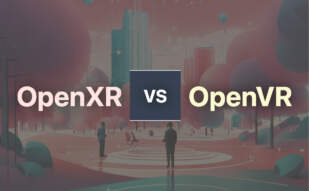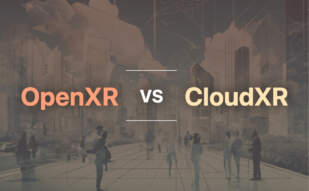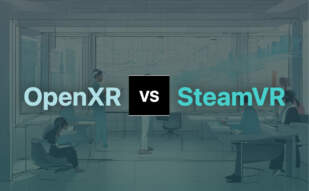OpenXR is a revolutionary AR/VR standard that unifies software development for broader hardware reach. With seamless integration and core API elements like XrSpace and XrActions, it ensures diverse device compatibility and boosts performance. OpenXR reduces the need for code rewrites and has garnered support from tech giants.
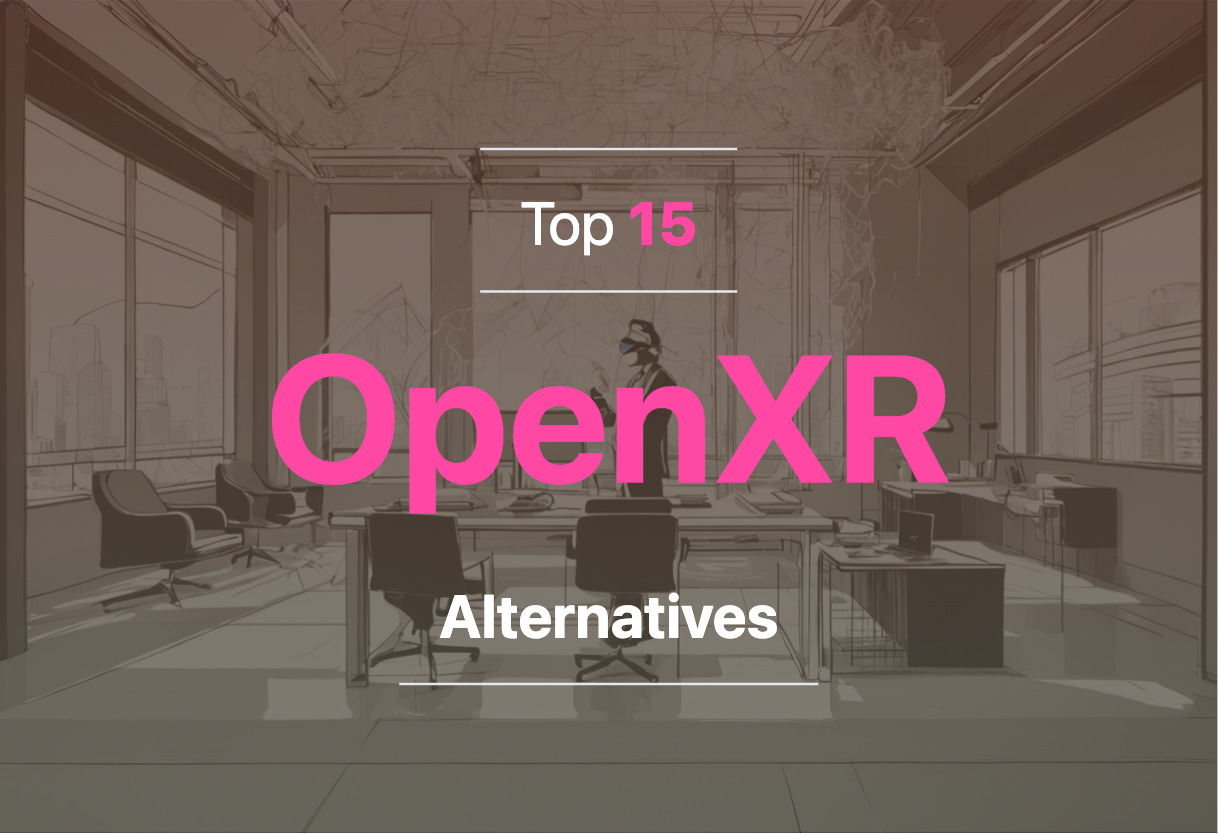
Looking for alternatives to OpenXR? Explore OpenVR, OpenComposite, Windows Mixed Reality, SteamVR, and more in the immersive tech landscape.
OpenVR
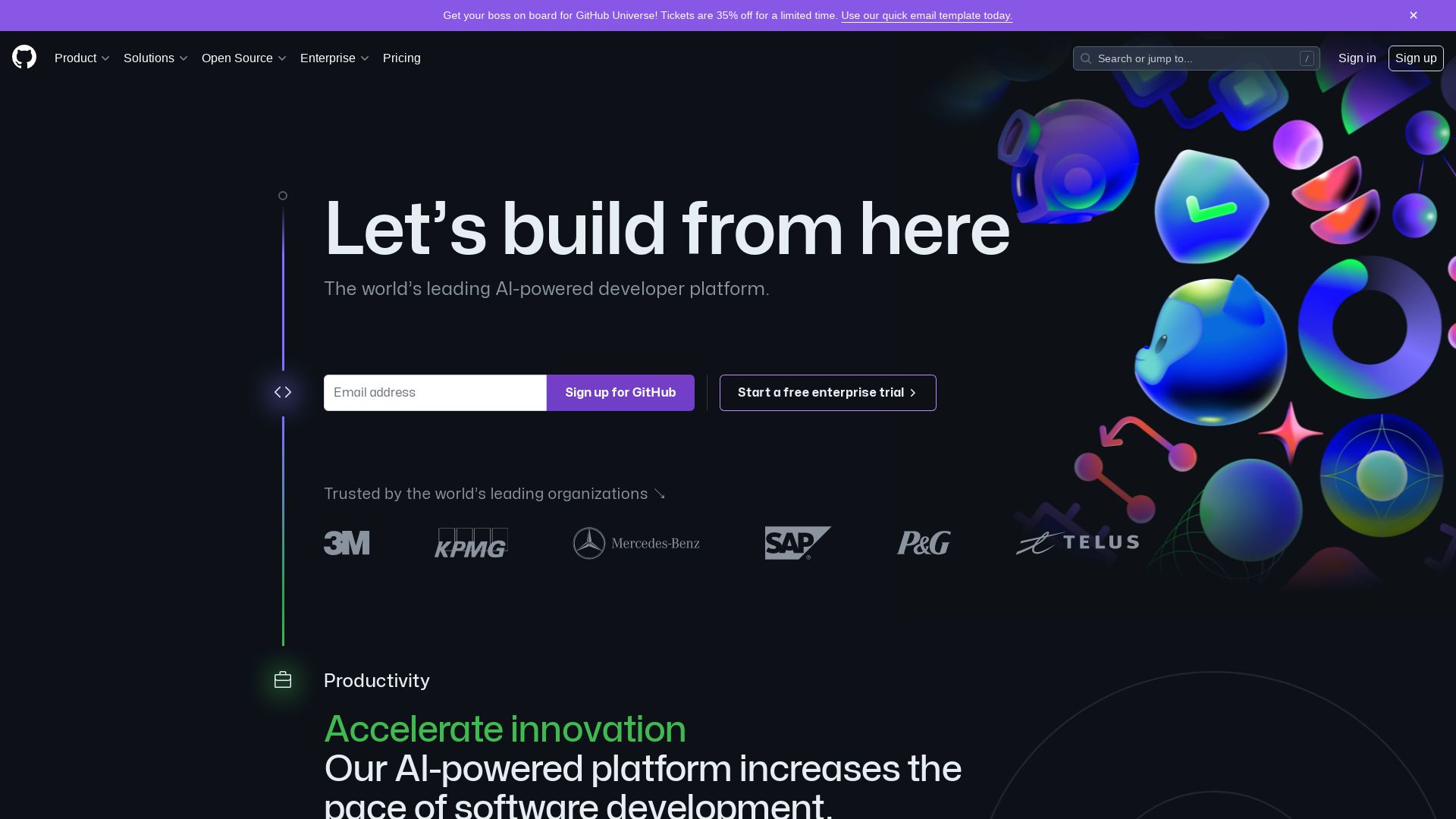
Known as a significant player in the virtual reality field, OpenVR is an influential software development kit (SDK) and application programming interface (API) developed by Valve. It is the default SDK for HTC Vive and supports a variety of VR devices, including Oculus Rift and Windows MR. OpenVR’s vast array of applications, ability to support multiple tracked objects, and compatibility across different Unity versions makes it a strong option for developers.
OpenVR Top Features
- Support for various VR devices including HTC Vive, Oculus Rift, and Windows MR.
- IVRChaperone for tracking data and IVRSystem::ResetSeatedZeroPose for resetting tracking.
- Comprehensive OpenVR Class Reference inclusive of constructors, fields, properties, methods.
- Multiple Unity versions compatibility.
- Support for multiple tracked objects, models, and textures.
| Interface | Description |
| IVRApplications_Version | One of the integral constituents. |
| IVRSystem_Version | Fundamental part of the SDK architecture. |
| IVRTrackedCamera_Version | A component that supports VR camera tracking. |
OpenVR Downsides
- Requires knowledge of CAPI and C# bindings for OpenVR interfaces.
- Requires regular updates as new interfaces are added, and existing ones updated.
- Old API support continues, necessitating dual API understanding and utilization.
OpenVR Pricing
As an open-source initiative, OpenVR is available to the public free of charge, fostering an environment of innovation and creativity in the global VR community.
OpenVR Use Cases
Use case 1: Game Development
As a versatile tool featuring broad support for SteamVR games, software, and multiple virtual reality devices, OpenVR is a boon for game developers aiming to create immersive experiences.
Use case 2: VR Hardware Development
OpenVR serves as a reliable interface between VR hardware and software, allowing developers working on VR hardware to achieve interoperability and extend their reach across multiple platforms.
Use case 3: Virtual Simulations
Thanks to its advanced tracking capabilities and support for multiple objects, models, and textures, OpenVR shines in the creation of realistic virtual simulations for educational or recreational purposes.
OpenComposite
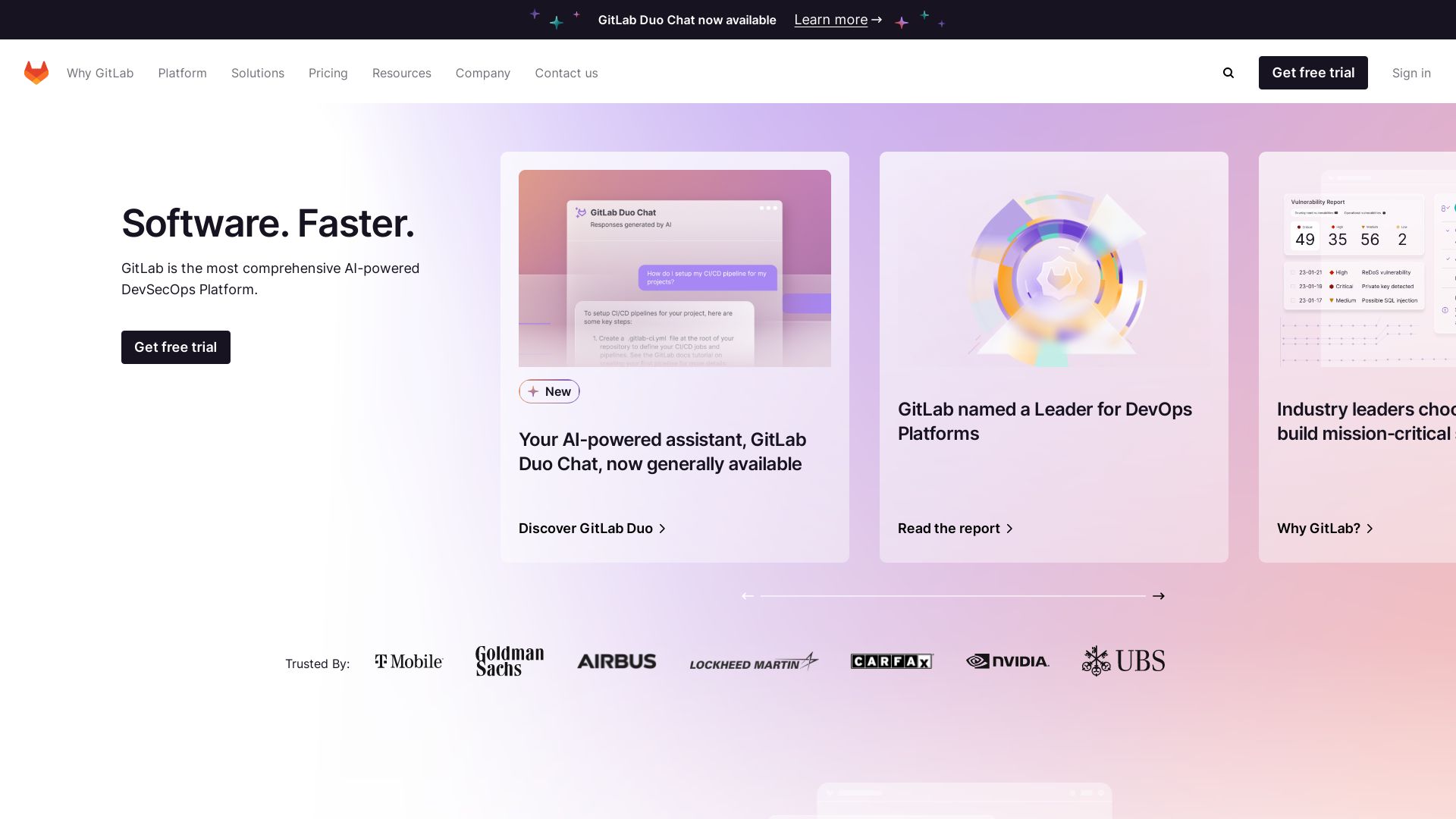
Enter the realm of OpenComposite, an audacious outlier in the OpenXR realm prepped to bypass SteamVR entirely!
OpenComposite’s Valiant Virtues
- Generates performance gain and crushes stuttering issues of SteamVR.
- Screens out the need for supporting Vive, thereby orchestrating better performance.
- Offers opencomposite.ini configuration options on startup, including renderCustomHands, handColour, supersampleRatio, and more.
| Factor | Perk |
|---|---|
| Data Consumption | Displays leaner appetite for data compared to SteamVR. |
| Installation | System-wide and per-game installation available with a lean towards system-wide for compatibility. |
| Compatibility | Harmonizes with an array of headsets from Windows Mixed Reality to Varjo, Oculus, HTC, Pico, and beyond. |
OpenComposite’s Challenging Corners
- Lacks support for controller models rendering and virtual keyboard functionality.
- Despite offering game support, game compatibility is limited.
OpenComposite’s Price Tag
Embrace the freewheeling spirit of open-source tech! OpenComposite is free to use, liberated by the MIT License.
OpenComposite Use Cases
Use case 1: The Performance Junkie
OpenComposite taps into the potential of your high-end rig, eliminating stuttering issues you’ve had with SteamVR, and offering smoother, better performance.
Use case 2: The Data-Conservative User
If data consumption concerns you, OpenComposite offers relief. With less data consumption than SteamVR, it’s a frugal choice.
Use case 3: The Compatibility Crusader
Navigate the ocean of device compatibility with OpenComposite’s perch for a multitude of headset interfaces – be it Oculus, HTC, or the Windows Mixed Reality.
Oculus
Reviving the VR industry with revolutionary technology, Oculus, founded by Palmer Luckey, was the first VR headset to offer a realistic experience at an accessible price.
Oculus Top Features
- Geometric pre-distortion and large stereoscopic field-of-view incorporated since the initial Oculus Rift prototype created in 2011.
- Achieves a view of over 90 degrees horizontal, double the FOV of previous VR devices.
- Combines three-axis gyros, accelerometers, and magnetometers for accurate head orientation tracking.
| Model | Key Features |
|---|---|
| Oculus Rift CV1 | First for public use; Released in 2016; heralded for improved clarity and diminished screen door effect. |
| Oculus Rift S | Replaced Oculus Rift CV1; Released in 2019; Discontinued in April 2021. |
Oculus Limitations
- Discontinuation of the Oculus Rift S in 2021, ending the Oculus Rift line.
- Lack of free movement compared to HTC VIVE SteamVR headset.
- Comfort and support issues reminiscent of the commercial failure of the Nintendo Virtual Boy.
Oculus Pricing
For specific pricing details, potential users are suggested to verify the latest market price as it may vary due to different regional dynamics.
Oculus Use Cases
Use case 1: Immersive Gaming Experience
With a resolution of 1280×800 total, effectively 640×800 per eye, Oculus offers an immersive and realistic gaming experience that fully transports the gamer into the virtual world.
Use case 2: Interactive Learning
Oculus, with its large stereoscopic field-of-view and accurate head orientation tracking capabilities, can be used effectively in interactive learning settings, offering immersive educational experiences.
Use case 3: Virtual Conferences
The large field-of-view provided by Oculus makes it an apt choice for virtual conferences, allowing seamless interaction among participants placed in different geographical locations.
Oculus VR
Imprints of innovation and tech brilliance, Oculus VR, founded by Palmer Luckey, lies at the epicenter of the VR world. Ostentatiously snatched up by Facebook, now Meta, for a cool $2B, Oculus fashioned several VR headsets, affecting waves of changes in the tech scene over the years.
Oculus VR Top Features
- Meta Quest 2 – An upgrade of the eminent Meta Quest, characterized by superior performance and innovative design.
- Rift S and Quest – Launched in 2019, these headsets offer fascinating capabilities.
- Meta Quest Pro VR headsets with Meta Quest 3 in the pipeline, promising an even greater immersive experience.
- Inexpensive standalone Oculus Go launched in 2017, offering budget-minded users a foray into VR.
| Product | Year |
|---|---|
| Oculus Rift DK1, DK2 | 2012-2013 |
| Meta Quest | 2018-present |
Oculus VR Limitations
- Stiff competition in the pipeline from the Apple Vision Pro mixed-reality headset.
Oculus VR Pricing
While exact pricing details were not provided, Oculus has showcased a history of constructing both high-quality and more economized options, spanning from the initial Oculus Rift to the standalone Oculus Go.
Oculus VR Use Cases
Use Case 1 – Gaming
The high-performance specifications of Oculus headsets make them a definitive pick for gamers seeking an immersive experience.
Use Case 2 – Business
With sturdy configurations, Oculus headsets can be employed for complex simulations, industrial design and training.
Use Case 3 – Social Interaction
Drumbeats of the Metaverse resound best on an Oculus headset, forming an unparalleled virtual social gathering platform.
Oculus Runtime

Oculus Runtime, the dynamo of AR/VR development, has quit the proprietary APIs, and switched to OpenXR. This transition aims to streamline VR/AR application creation by offering full interoperability. Oculus Runtime is progressively replacing the now defunct, Oculus Mobile and Oculus PC SDK. Oculus unequivocally asserts new developments beyond August 2022 will be tailored with OpenXR, catalyzing the VR/AR evolution.
Oculus Runtime Top Features
- OpenXR augments application interoperability, buoyed by wide-scale industry support.
- Continuity support for earlier Oculus SDKs applications, albeit updates are solely via OpenXR extensions.
- Oculus Runtime’s collaboration with Unity and Unreal Engine across timelines exhibits progressive VR assimilation.
| Unity’s OpenXR Support | Undergoing experimental phase; full-scale support expected by 2022. |
| Unreal Engine’s OpenXR Integration | Estimated to align with Unreal Engine version 5 release in 2022. |
Oculus Runtime Limitations
- Limited propagation of new features through Oculus SDKs.
- End of the road for Oculus Rift as it gets the axe in 2021.
- Users frequently report motion sickness.
- An expensive lawsuit filed by Zenimax for intellectual property violation led to a fine of US$500 million.
Oculus Runtime Use Cases
Gaming
Oculus Runtime enjoys immense popularity as a gaming device. Despite its gaming-centric nature, the axiom revolves around social applications being the most sought-after VR experiences.
Visualization and Design in Architecture
With Oculus Runtime, architectural firms gain an edge, effective visualization and design enhancement. A boon for architects aiming at precision.
Automotive Configuration
Renowned auto giants like Audi leverage Oculus Runtime for configuration purposes. It manifests as a transformative tool facilitating informed decision-making in design & engineering.
Vulkan
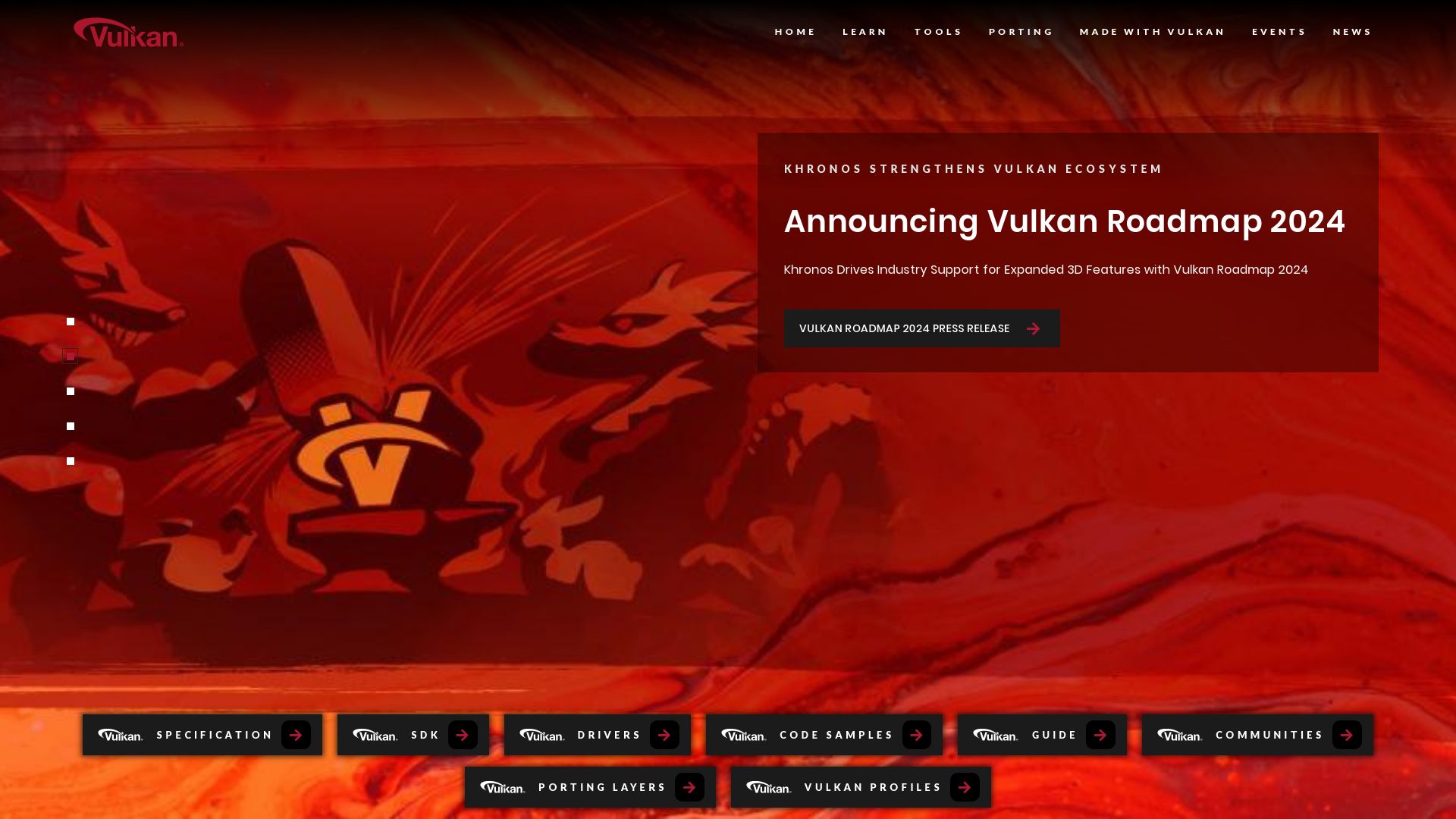
Get ready for take off with Vulkan, a cross-platform industry standard graphics API that’s way more than a hot air balloon. This Swiss Army knife of graphic APIs is ready to sprinkle its magic dust over a whole range of devices, making it a darling of developers world over. Still wondering what Vulkan can do for you? Let’s dive a little deeper.
Vulkan Top Features
- Let go of fragmentation worries with Vulkan 1.3, designed to beef up streamlining. A feature buffet that doesn’t leave you confused!
- Hardware-accelerated video compression and decompression. Say goodbye to the days of buffering – Vulkan’s got your back!
- Your safety is its command. Vulkan SC 1., based on Vulkan 1.2 API, caters to safety-critical systems. Buckle up for a worry-free ride.
- The hero of mobile graphics APIs. Rise above platform fragmentation with Vulkan’s Portability.
| Unique Feature | Benefit |
|---|---|
| Hybrid viewport technology for real time rendering | Mimics photorealistic look and feel. No more reality FOMO! |
| Vulkan queue submission, events, pipeline barriers | Control scheduling, synchronization, and memory allocation like a boss. |
| Availability of Vulkan extensions for mobile | Improved state of graphic APIs on the go. Empowering developers on the move! |
Vulkan Disadvantages
While Vulkan offers a myriad of perks, some limitations include:
- No specific details outlined for deployment timelines and device support – akin to joining a party with the time and location TBD.
- No explicit pricing information provided. It’s like shopping without price tags!
Vulkan Use Cases
Use case 1
Vulkan is a godsend to graphics programmers starting their journey. Its provisions for efficient control over tasks like scheduling, synchronization, and memory allocation smooths the path for neophyte enthusiasts.
Use case 2
For mobile developers, Vulkan is like a VIP pass to the world of advanced graphic applications. Its support for graphics APIs propels mobile app graphics to unprecedented levels.
Use case 3
Cut down the red tape! Vulkan aids companies targeting safety-critical systems by aligning graphics and compute requirements. Safety first is their motto too!
WebXR
Behold the evolution of VR and AR in the marvellous frontier of WebXR. It stands strong, harmonizing VR and AR realities, thus paving the way for seamless creation of immersive 3D art, VR appliances, and much more.
WebXR Best Features
- Revolutionary Precision: Relies on low-latency, high precision, and rapid data processing, achieving web disruptions less than 20ms to maintain the illusion of reality.
- Innovative Device API: addresses performance dips, voluminous data, and device communication security while providing capabilities such as recognizing and locating VR or AR devices.
- Distinct VR and AR support: Broad adoption by major browsers, with existing WebXR support in Chrome and experimental technology integration in Firefox.
- Futuristic Applications: expanding horizons with interactive 3D art, 360-degree videos, immersive amusement, and model visualizations.
| Comprehensive API: | WebXR Device API is a Web API facilitating access to VR devices such as HTC Vive, Oculus Rift, Google Cardboard. |
| New Device Support: | WebXR automatically supports new devices that provide a browser, safeguarding the future of your application. |
| Web-Accessible: | Rapid user onboarding, swift deployment, and accessible web-based content. |
WebXR Limitations
- Rendering Technology: WebXR is not a rendering technology, leaving the task of managing 3D data and its display to developers.
- Performance glitches: Any delay or glitch may negatively affect user experience.
- Traditional Limitations: Traditional communication methods like web sockets are not speedy enough for its requirements.
WebXR Use Cases
Use case 1: Virtual Art Creation
WebXR paints a vivid canvas for the creation of inimitable 3D art. Its robust support for VR and AR fluidly integrates into crafting masterpieces untouched by physical regulation.
Use case 2: Innovative Entertainment
The potential of WebXR stretches into the realm of 360-degree video inventing immersive and multi-dimensional entertainment experiences.
Use case 3: Visualization Models
Model visualizations find a new abode in the properties of WebXR, fostering detailed and enhanced perspectives across diverse fields of study and profession.
Windows Mixed Reality
Welcome to the world of Windows Mixed Reality, a realm where the physical and the digital get cozy and cast a fascinating interplay of experiences. Dare to dive into the future of computing, following the legacies of mainframes, PCs, and smartphones. Get ready to break those screen bounds and flirt with interactive data in your very own living spaces, social media through mobile AR, and more! We’re talking holographic representations of people, 3D models, and real-life experiences, all blended into an enticing cocktail called Mixed Reality (MR).
Windows Mixed Reality Best Features
- Inside-out tracking technology for wider VR experiences.
- Two devices – Holographic and Immersive VR, offering multiple experiences.
- Compatibility with a plethora of normal laptops and older PCs, aimed to charm the mass market.
- Controllers tracked by the headset. Connect 4 for sensors, anyone?
| Brand | Unique Features |
|---|---|
| Acer | Superior display and comfort |
| HP | Exceptional design and setup convenience |
Windows Mixed Reality Limitations
- May require regular updates for optimal functioning.
- Setup process can be a little complex for non-techies.
Windows Mixed Reality Pricing
Please visit the official Microsoft website for the latest pricing details on the assorted Mixed Reality gear.
Windows Mixed Reality Use Cases
Use Case 1: Entertainment
Step up your gaming experience or take your movie nights to the next level with a splash of 3D effects and the magic of spatial sound.
Use Case 2: Education
Bring lessons to life. Dissect a frog without the mess or traipse around the Colosseum without leaving your class.
Use Case 3: Business Solutions
Reimagine meetings, design products, or tour a facility under construction, all from your home screen. Transform ‘remote’ work to ‘enhanced’ work.
SteamVR

Immerse yourself in the captivating virtual reality universe enabled by SteamVR. Developed by Valve as an extension of Steam, this AR tool breathes life into the VR experiences by offering robust features and utility.
Priority Features of SteamVR
- Interactivity: With SteamVR, you can customize audio settings, pair new devices, and manage firmware updates.
- Immersion: SteamVR boasts a comprehensive 360-degree full room VR experience, pushing the envelope of innovation.
- Compatibility: Alongside its own HMDs, SteamVR accommodates others like Oculus Rift, enabling versatility.
- Community Connection: Connect with friends and launch apps in different VR environments directly from the SteamVR Home.
| Additional Features | Explanation |
|---|---|
| In-app Purchasing | Purchase within the app using the microtransactions API, similar to other Steam apps. |
| Overlay Applications | SteamVR enables the creation of overlay applications for further functionality. |
| Accessories & Input Devices | Enhances positional tracking via accessories like base stations and devices like SteamVR Controllers. |
Limitations of SteamVR
- Compatibility Issues: Some users reported issues between SteamVR and Meta Quest 3 when using air link in 2022.
- Specific System Requirements: SteamVR requires OS: Windows 7 SP1, Windows 8.1 or later, Windows 10, and certain Processor and Graphics configurations.
Use Cases Infused with SteamVR
3D Gaming Environment
SteamVR’s collaboration with Nintendo’s Virtual Cockpit introduces spatial recognition technology, enhancing 3D gaming experiences.
Virtual Reality Experiences
The HTC Vive, SteamVR’s first commercial product, released in cooperation with HTC, brings to life an unprecedented VR experience.
VR for Casual Footwear
Experience enhanced immersion in VR environments with CyberShoes, developed by SteamVR, designed to recreate natural walking movements, compatible with multiple headsets.
Unity

Launched in 2005, Unity stands as a powerful game development engine, facilitating the creation of 3D and 2D games. It excels in augmented reality and virtual reality realms, offering a suite of tools for high-quality game development.
Unity’s Main Features
- Enables creation of cross-platform games, especially Android and iOS
- Flexible with different operating systems, allowing developers to create applications from Augmented Reality to 3D simulations
- Rich asset store integrated with diverse pre-designed textures
- Support for multiple coding languages, including Javascript, BOO script, and C#
- Active developer community for assistance and problem-solving
- Continuously evolving tech for improved user-friendliness and immersive visual experiences
| Fortified Rendering Technology | Unity comes with advanced rendering technology that fosters lifelike visuals. |
| Asset Store | A hub for pre-designed textures and features that aid game design brainstorming. |
| Active Community | Akin to a living, breathing forum for developer interactions for problem-solving and feedback-centric system improvement. |
Unity Downsides
- Sudden and unannounced changes to terms of service, leading to diminished trust
- New pricing model considered harmful to solo, indie and mobile developers
- Developers are apprehensive that potential install fee abuse might upset their financial stability
- Hiking fees in standard markets (e.g., US, UK) compared to emerging markets (e.g., India, China) raises concerns
Unity Pricing
Unity offers both free and paid versions. However, the impending pricing model, expected to take effect from January 1, 2024, has garnered criticism. The new design levies a fee each time a game is installed. This places additional pressure on developers, particularly those creating indie and mobile games. Unity guarantees that install fees will commence only when a game surpassing $200,000 in revenue and over 200,000 installations. Developers also fear potential abuse of per-install fees, like repeated downloads by one user. Unity has announced its intentions to tackle this through fraud detection measures.
Unity Use Cases
Use Case 1: Cross-platform Game Development
Unity stands as a popular choice for cross-platform game development. It supports several platforms ranging from Android to iOS, ensuring games are accessible to a wider audience.
Use Case 2: Augmented Reality/Virtual Reality (AR/VR) Games
Unity’s powerful tools and high adaptability make it perfect for creating AR/VR games. Developers can create immersive experiences and rich, lifelike environments within games.
Use Case 3: Community Collaboration and Learning
Unity’s active developer community functions as a learning hub. Developers can share issues, work together to solve problems, and learn from one another’s experiences.
MRTK
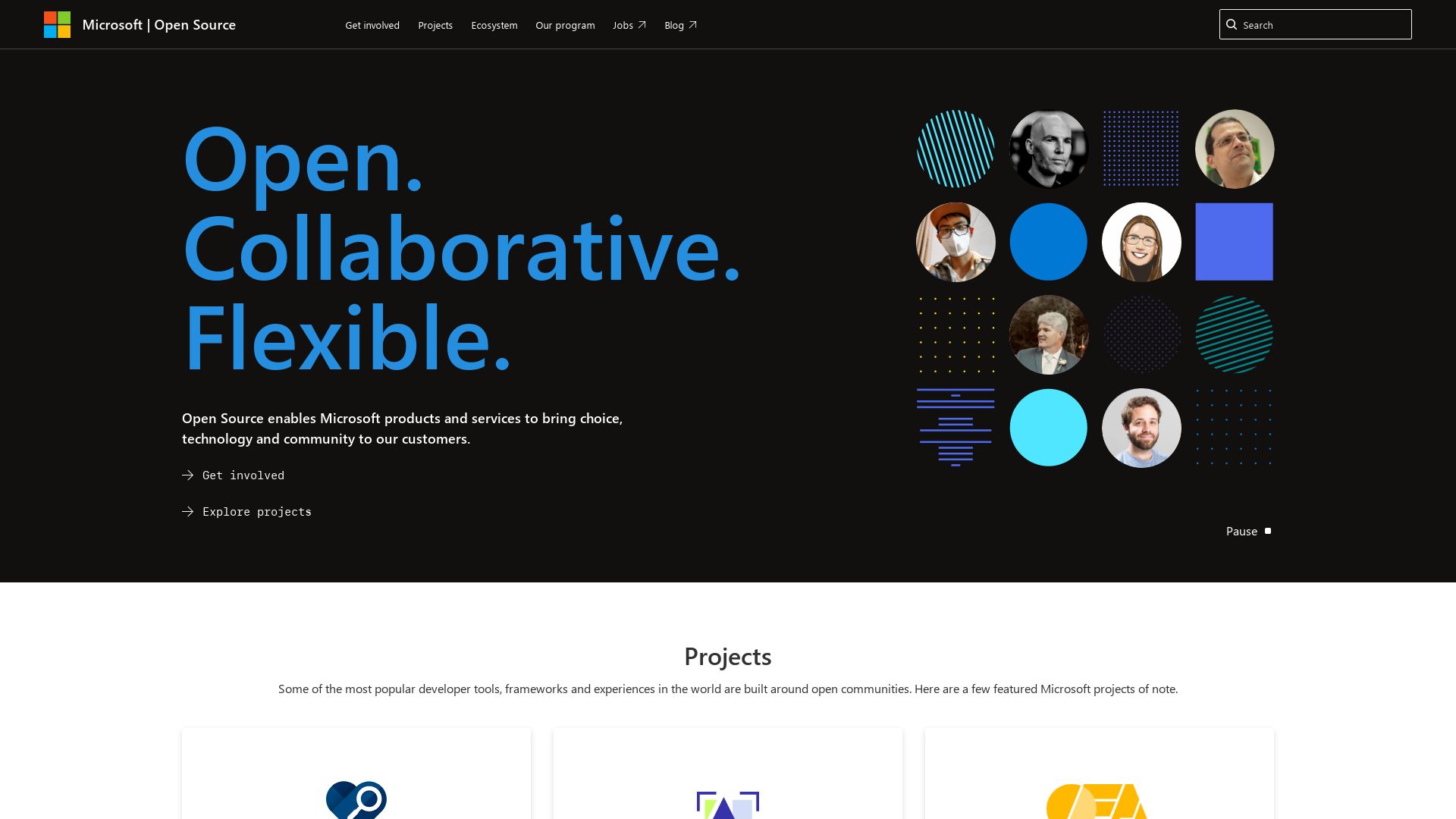
The Mixed Reality Toolkit (MRTK) is a cross-platform toolkit designed by Microsoft. It aids in the development of Mixed Reality (MR), Augmented Reality (AR), and Virtual Reality (VR) software applications. Originally developed for the HoloLens 1 in 2016, it now boasts cross-functionality with a variety of platforms.
MRTK Top Features
- Cross-platform input system: Empowers development across different platforms including HoloLens 2, Windows Mixed Reality headsets, Oculus, Android and iOS devices, and SteamVR devices via OpenXR.
- Rapid Prototyping: Facilitates immediate visualization of changes via in-editor simulation.
- Interactive Scripts: Provides solutions for 3D object placement and manipulation.
- Spatial Awareness: Detects the environment in the real world for immersive MR experiences.
- Diagnostics: Offers runtime verification for easy debugging and system analysis.
MRTK Limitations
(Considering the data given, there is no specific mention of MRTK’s limitations. However, like every tool, MRTK might have certain restrictions depending on the situation. Any boundary conditions would be specific to the project requirements.)
MRTK Pricing
MRTK is a part of Microsoft’s open-source initiative, thereby making it free to use for developers worldwide.
MRTK Use Cases
Use Case 1: Rapid Prototyping
MRTK facilitates developers with in-editor simulation, thus allowing for swift visibility of changes. It dramatically cuts down the time required to finesse 3D object placement, manipulation scenarios, and prototyping stages.
Use Case 2: Enhancing User Interface in Mixed Reality Applications
With its rich collection of UX building blocks and tracking functionalities (hand, eye, voice), MRTK can drastically augment user interfaces for various mixed reality applications, thereby enhancing user experiences.
Use Case 3: Accessibility in Cross-platform Development
The cross-platform input system of MRTK enables developers to build applications that can run on a wide range of devices, including Microsoft’s HoloLens 2, Windows Mixed Reality headsets, Android and iOS devices, and SteamVR devices.
| Additional Feature | Description |
|---|---|
| UX Building Blocks | Contains button controls, object manipulators, system keyboards, object collections, and standard shaders, thus augmenting interactions and UI. |
| Hand, Eye, and Voice Tracking | Enriches user experiences by creating intuitive interactions. |
| Multi-scene Manager | Efficiently manages multiple scenes in mixed reality, including scene loading, unloading, and transition effects. |
XR Interaction Toolkit
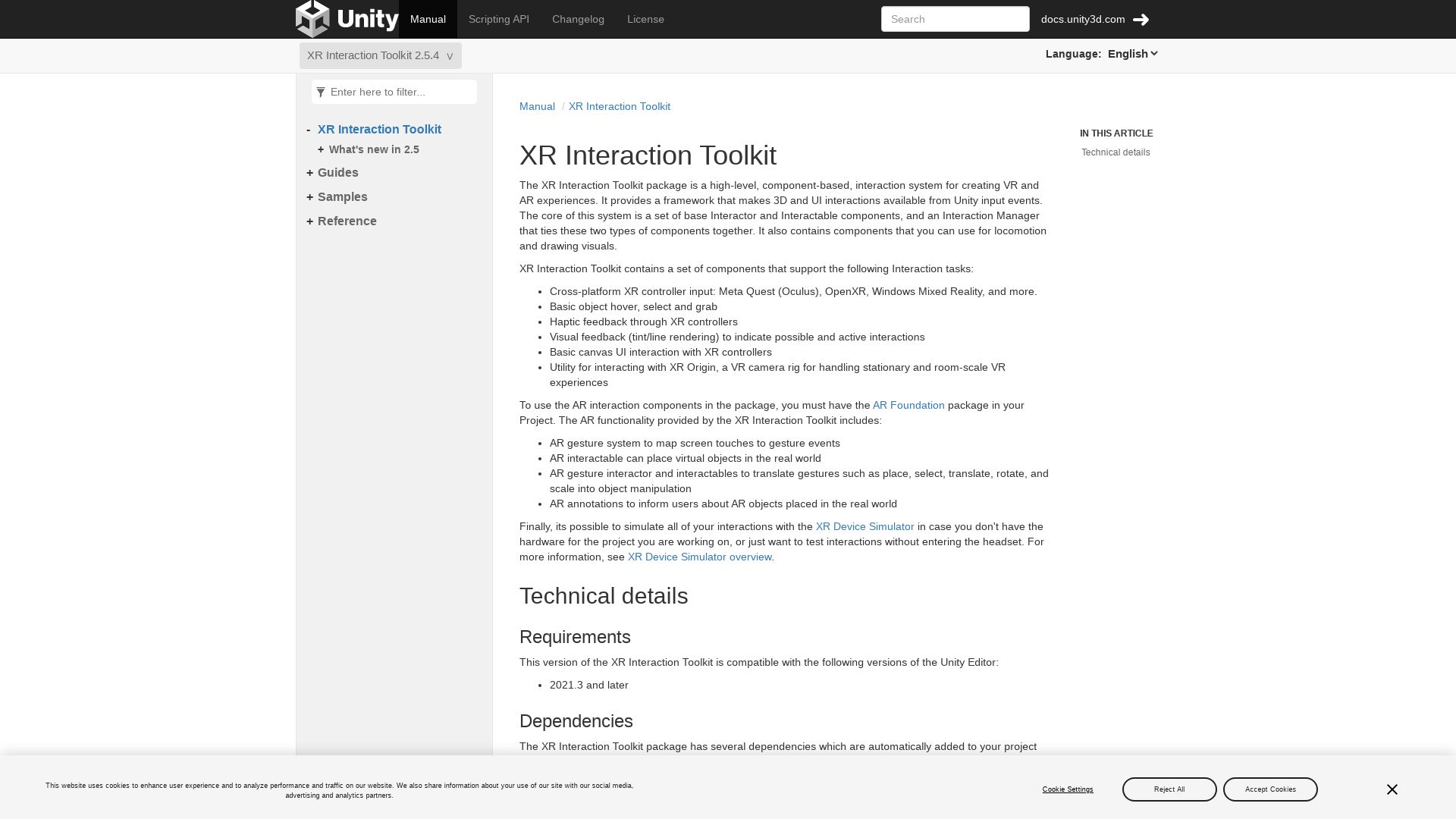
Enter the realm of XR Interaction Toolkit, a robust, component-based interaction system developed by the trusted techies at Unity. This versatile package opens doors to both Augmented Reality (AR) and Virtual Reality (VR) worlds, marrying the physical and digital in seamless interactions.
XR Interaction Toolkit Top Features
- High-level, component-based interaction system enabling VR and AR experiences
- Generous compatibility supporting multiple XR controller input systems including Meta Quest (Oculus), OpenXR, and Windows Mixed Reality
- Comprehensive AR functionalities utilizing the AR Foundation package underpinning gesture system, object placement and manipulation, and annotations
- Effective simulation with XR Device Simulator ensuring thorough testing of all interactions
- Constant updates, with the latest version 2.3.0 released on February 10, 2023
| Special Features | Description |
|---|---|
| Locomotion and Graphical Visuals | Makes 3D and UI interactions available from Unity input events, helping developers create more immersive experience |
| Interactor and Interactable Components | Built around base Interactor and Interactable components, all tied together expertly by the Interaction Manager |
| Visual and Haptic Feedback Support | Allows haptic feedback via XR controllers and offers visual feedback for possible and active interactions |
XR Interaction Toolkit Limitations
- Issues with supporting multiple interactors on XR Grab Interactables
- Insufficient support for mouse inputs interacting with world space UIs when an XR Plug-in Provider is enabled
XR Interaction Toolkit Pricing
The XR Interaction Toolkit serves the community as a part of Unity, and usage policies follow that of the Unity platform. For specifics, users are advised to check the latest updates on Unity’s official website.
XR Interaction Toolkit Use Cases
Use case 1 – VR/AR Developers
For VR/AR developers, the XR Interaction Toolkit serves as a one-stop solution for crafting engaging AR and VR experiences. The broad compatibility with multiple XR controller systems ensures that no platform is left out.
Use case 2 – Gaming Industry
In the gaming industry, the XR Interaction Toolkit has enabled designers to create immersive 3D worlds and interactive UIs for an elevated user experience.
Use case 3 – Education Sector
The toolkit’s simplified AR capabilities could be effectively used to create education-focused AR applications, bringing virtual objects into the real world to help explain complex concepts with greater clarity.
Unity XR
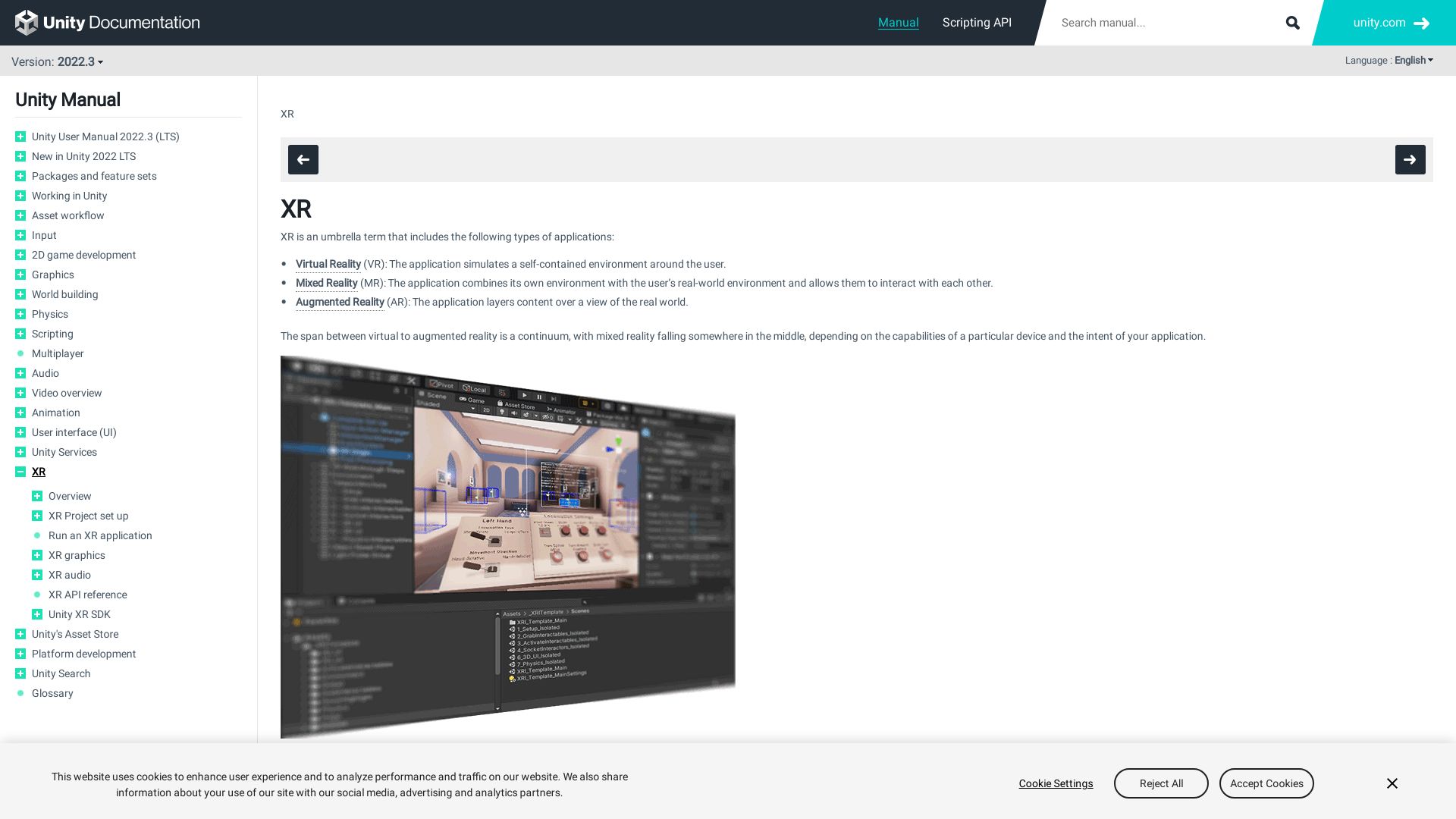
A frontrunner in the realm of immersive technology, Unity XR takes a major leap in the field of virtual reality (VR), mixed reality (MR), and augmented reality (AR). This versatile platform propels the creation of XR games and apps, turning groundbreaking concepts into reality.
Unity XR Top Features
- Supports VR, MR, and AR: Unity XR permeates through all aspects of extended reality, including VR, MR and AR.
- Unified plugin framework: Unity 2019.3 employs a new integrated plugin framework enabling smooth cross-platform integration.
- Easy development: Unity XR facilitates swift development and running of your XR game or app during the development phase.
- Essential plugins: Unity XR bolsters XR game app development with key plugins like XR Plugin Management, XR Interaction Toolkit, OpenXR Plugin, and Universal RP.
- XR Interaction Toolkit: This toolkit, accessible on Github, provides components for object interaction, UI interaction, and haptic feedback, without requiring any coding.
| Feature | Description |
|---|---|
| Unity XR SDK | This SDK aids headset and device manufacturers to incorporate hardware support into Unity. |
| XRIT and AR Foundation samples | Sample codes available at Github repositories for XRIT and AR Foundation to guide developers. |
Unity XR Disadvantages
- Fully functional user interaction is limited to Complete Set Up prefab in XRI.
Unity XR Use Cases
Use case 1
Unity XR is the go-to solution for developers looking to create immersive XR games and apps, leveraging a unified plugin framework.
Use case 2
xR headset and device makers can utilize Unity XR to seamlessly integrate hardware support for a comprehensive user experience.
Use case 3
Newbies and proficient developers alike can easily engage with XR technology with the help of upskilling courses offered by Unity XR. This includes developing AR, VR, managing XR projects, and learning to analyze the technical feasibility of XR projects.
Microsoft Mixed Reality Toolkit
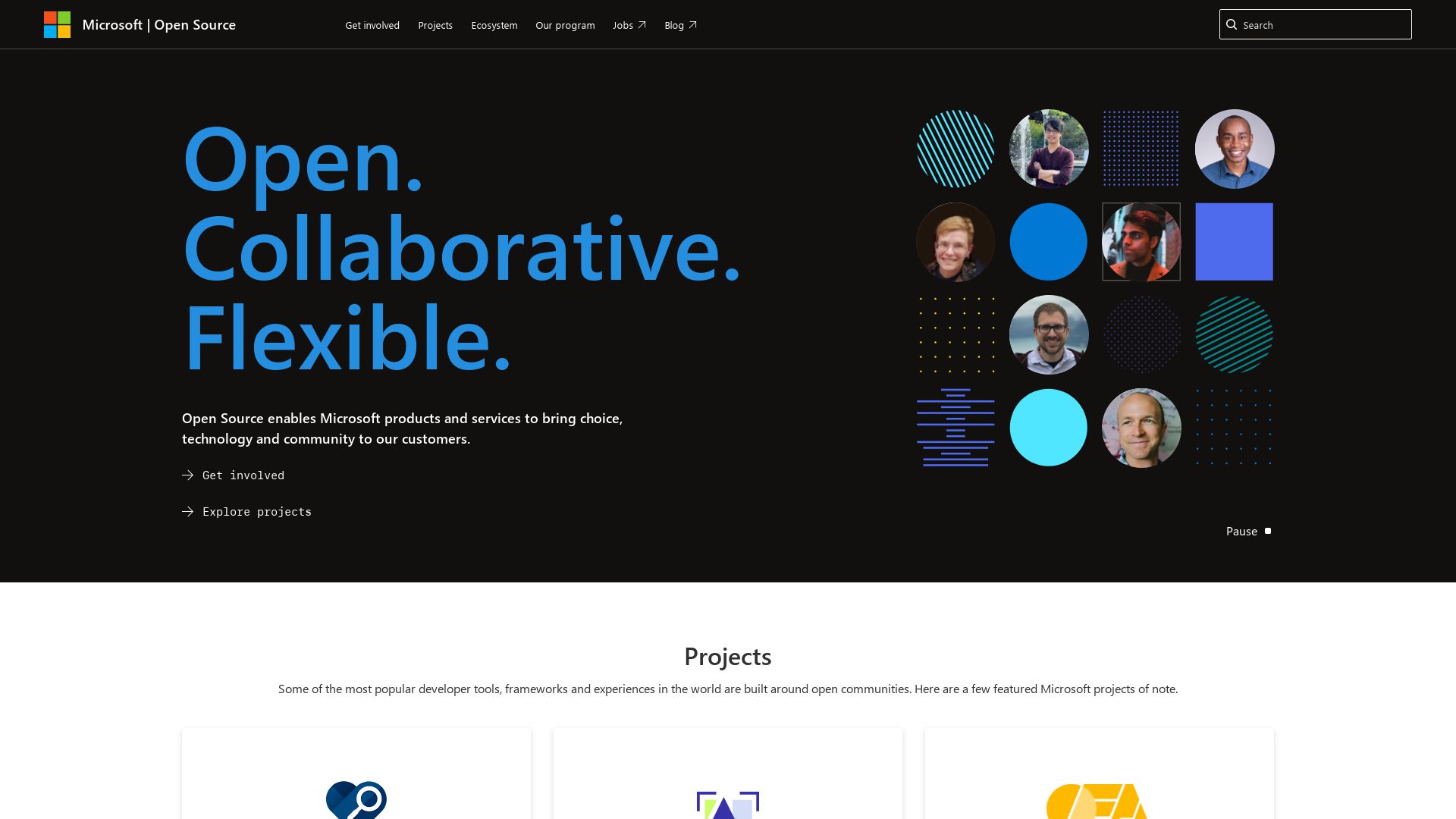
An accelerator for cross-platform Mixed Reality (MR) app development, Microsoft Mixed Reality Toolkit (MRTK) offers an expansive range of functions and capabilities geared towards making MR application building both seamless and efficient.
Microsoft Mixed Reality Toolkit Top Features
- A diverse set of UX building blocks including Button, Slate, Interactable, Solver, Object Collection, Tooltip, Slider, MRTK Standard Shader, Hand Menu, and more.
- Supports a wide range of platforms and plugins like XR SDK Plugin, Unity OpenXR Plugin, and devices like Microsoft HoloLens 2, Windows Mixed Reality headsets, Meta Quest Device.
- Built-in hand tracking capabilities backed by Ultraleap Leap Motion controller.
- Resources on Mixed Reality Dev Center and Azure to assist developers.
| Features | Benefits |
|---|---|
| Cross-platform Input System | Delivers smooth interactions across different platforms. |
| Community Engagement | Facilitates growth and learning via Slack, Stack Overflow, and other channels. |
| MRTK Examples and Sample Apps | Provides visual learning material for developers. |
Microsoft Mixed Reality Toolkit Limitations
- MRTK2 being phased out with the introduction of MRTK3.
- Complexity increases due to the varying levels of mastering different components.
- Depending on the use case, system prerequisites like Visual Studio 2019, Unity 2018.4.x, Unity 2019 along with Windows SDK 18362+ for UWP app may serve as hindrances.
Microsoft Mixed Reality Toolkit Pricing
The Microsoft Mixed Reality Toolkit is open-source and completely free for developers to use, aligning with Microsoft’s Open Source Code of Conduct.
Microsoft Mixed Reality Toolkit Use Cases
Use case 1: MR Application Development
Developers building MR apps with a need for fast prototyping and cross-platform input systems will find MRTK an invaluable companion.
Use case 2: Hand Tracking
With integrated support for Ultraleap Leap Motion controller, developers seeking to incorporate detailed hand tracking in their apps can use MRTK to realize this functionality.
Use case 3: Community Engagement
MRTK provides ample opportunities for developers to engage with the MR community via Slack, Stack Overflow, contributing to open-source development and benefiting from shared wisdom.
CloudXR
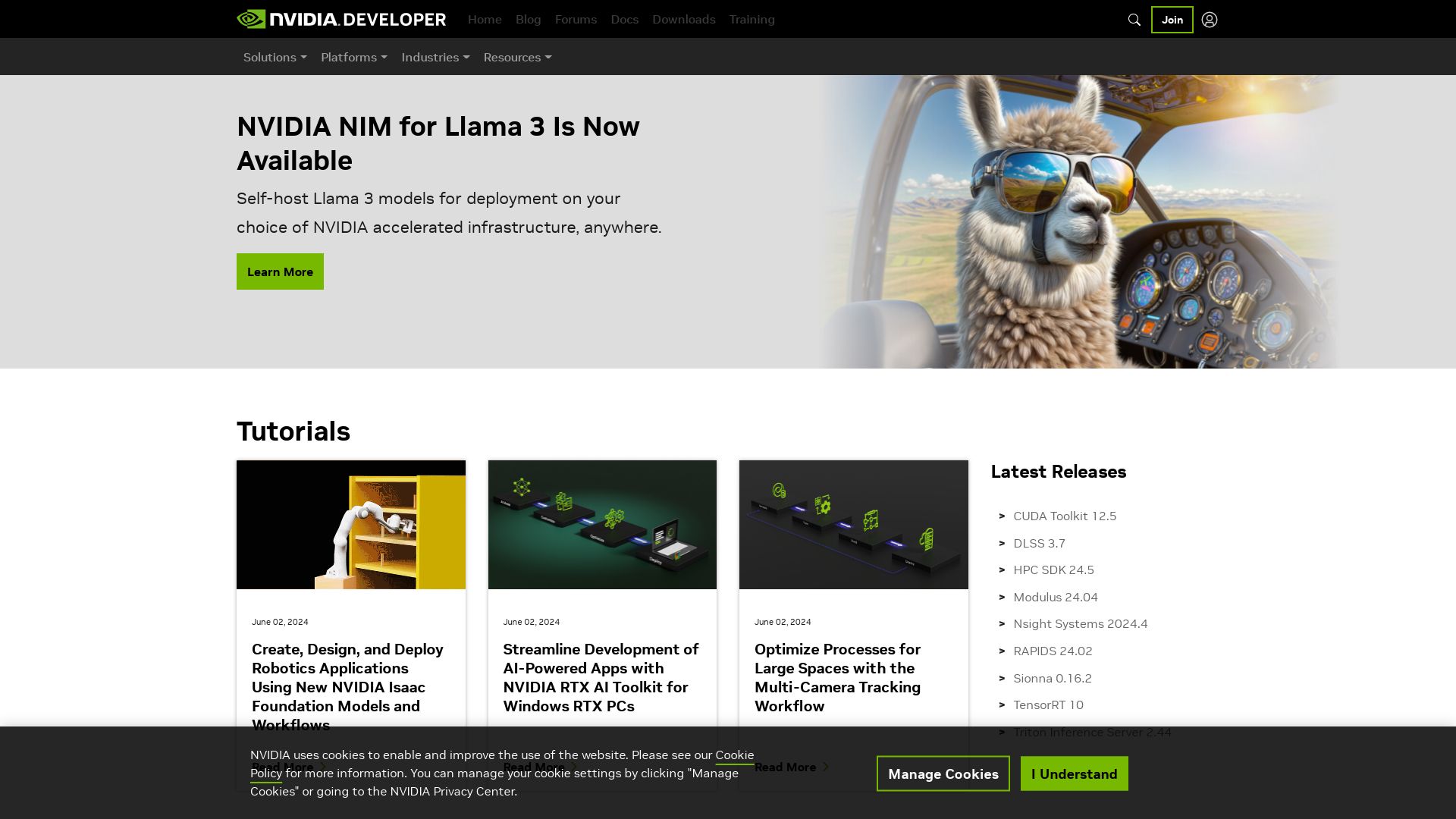
An exciting offering from NVIDIA, CloudXR is a powerful GPU-accelerated AR/VR streaming platform. It delivers exceptional experiences by streaming OpenVR-based apps over standard network technologies right from a remote server. Compatible with both Android and Windows, CloudXR provides a seamless integration for a variety of devices.
CloudXR Top Features
- Streams XR content to XR client devices using standard network technologies.
- Compatible with various VR clients including HTC VIVE headsets, Oculus Quest 2, and HTC VIVE Focus 3.
- AR client compatibility supports Samsung Galaxy S20 streaming over 5G network.
- The CloudXR client SDK includes a server driver, client SDK, and sample client applications, easing integration.
- Server driver integrates with SteamVR, encoding rendered frames and system audio for client’s decoding and display.
- Supports ARCore and ARKit based AR devices along with HTC VIVE, HTC VIVE Pro, and Valve Index.
- NVIDIA RTX GPUs and NVIDIA RTX vWS augment CloudXR’s capability to stream high-fidelity XR to Android and iOS devices over networks.
| Feature | Description |
|---|---|
| OpenVR & OpenXR Compliance | Inclusion of current OpenVR and OpenXR industry standards within CloudXR server extensions. |
| Streaming Capability | Enables VR/AR streaming to untethered devices while maintaining high fidelity comparable to tethered configurations. |
| NVIDIA RTX Powered Servers | Allows the use of NVIDIA RTX powered servers to efficiently stream VR/AR experiences from OpenVR applications. |
CloudXR Downsides
- The effectiveness of CloudXR depends largely on the quality of network connection as streaming can be subjected to latency issues.
- Though compatible with a range of devices, compatibility is more limited for AR clients.
CloudXR Use Cases
Use case 1: High-Fidelity VR/AR Streaming
CloudXR makes high-fidelity VR/AR streaming possible for untethered devices, offering portable experiences with optimum quality. It’s a prime solution for developers seeking to deliver state-of-the-art VR/AR content remotely.
Use case 2: Low-Latency Edge Streaming
By leveraging CloudXR on RTX powered servers, developers can achieve ultra-low latency streaming from the network edge. This is especially beneficial in providing real-time VR/AR experiences in sectors such as entertainment, real estate, and gaming.
Use case 3: Multi-Tenant Deployments
With its compatibility with NVIDIA EGX and NVIDIA RTX vWS software, CloudXR is an ideal solution for businesses looking for multi-tenant deployments. Additionally, its streamlined management supports VMware and Red Hat virtualization platforms.
Tiffany Brise
Content writer @ Aircada, patiently awaiting a consumer AR headset that doesn’t suck.



